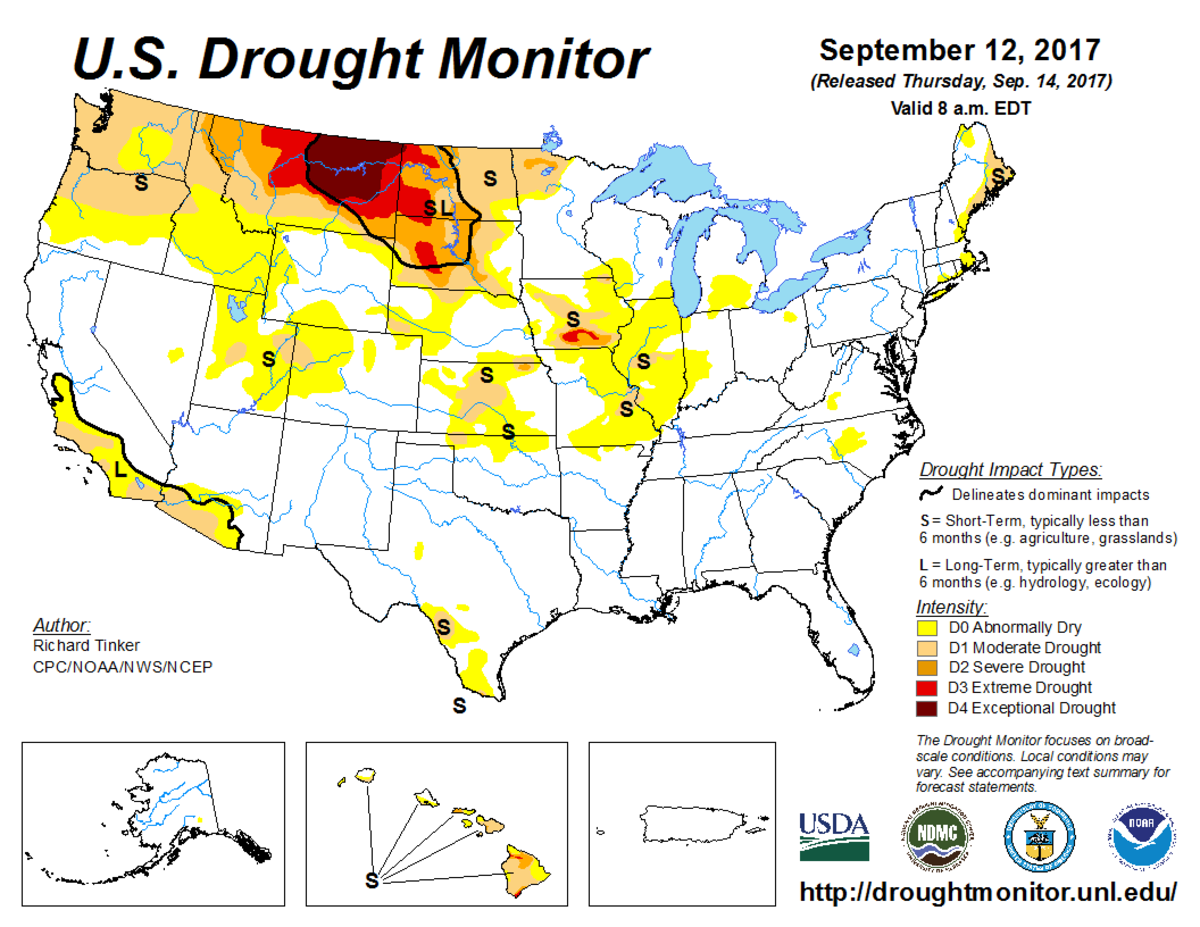
According to the September 12, 2017, U.S. Drought Monitor, moderate to exceptional drought covers 16.1% of the contiguous United States, an increase from last week’s 13.5%. The worst drought categories (extreme to exceptional drought) also increased from 2.8% last week to 3.1%.
A strongly meridional pattern continued in the upper-level circulation this U.S. Drought Monitor week with an intense ridge in the West and deep trough in the East. Hurricane Irma, with its wide heavy rain shield, was guided across Florida and deep into the southeastern states by southerly flow from the upper-level trough over the eastern contiguous United States and the Bermuda High over the North Atlantic. Meanwhile, further south in the Gulf of Mexico, weak steering currents guided Hurricane Katia away from the United States and into Mexico.
The trough over the East funneled cooler-than-normal Canadian air masses into the eastern third of the country, while the western ridge kept temperatures warmer than normal from the West Coast to Northern Plains. Aside from a few showers over the Southwest, the ridge deflected weather systems away from the West, and the northwesterly flow over the central contiguous United States kept dry air masses over the Great Plains to Midwest.
Irma rains soaked the Southeast, and parts of the Southwest and New England were wetter than normal. But most of the contiguous United States had little to no precipitation this week, resulting in expansion of drought and abnormal dryness in parts of the Northwest, Plains, and Midwest.
Abnormal dryness and drought are currently affecting nearly 80.7 million people across the United States—about 25.9% of the country’s population.

The full U.S. Drought Monitor weekly update is available from Drought.gov.
In addition to Drought.gov, you can find further information on the current drought as well as on this week’s Drought Monitor update at the National Drought Mitigation Center. See their recent news releases.
The most recent U.S. Drought Outlook is available from NOAA’s Climate Prediction Center and the U.S. Department of Agriculture provides information about the drought’s influence on crops and livestock.
For additional drought information, follow #DroughtMonitor on Facebook and Twitter.



